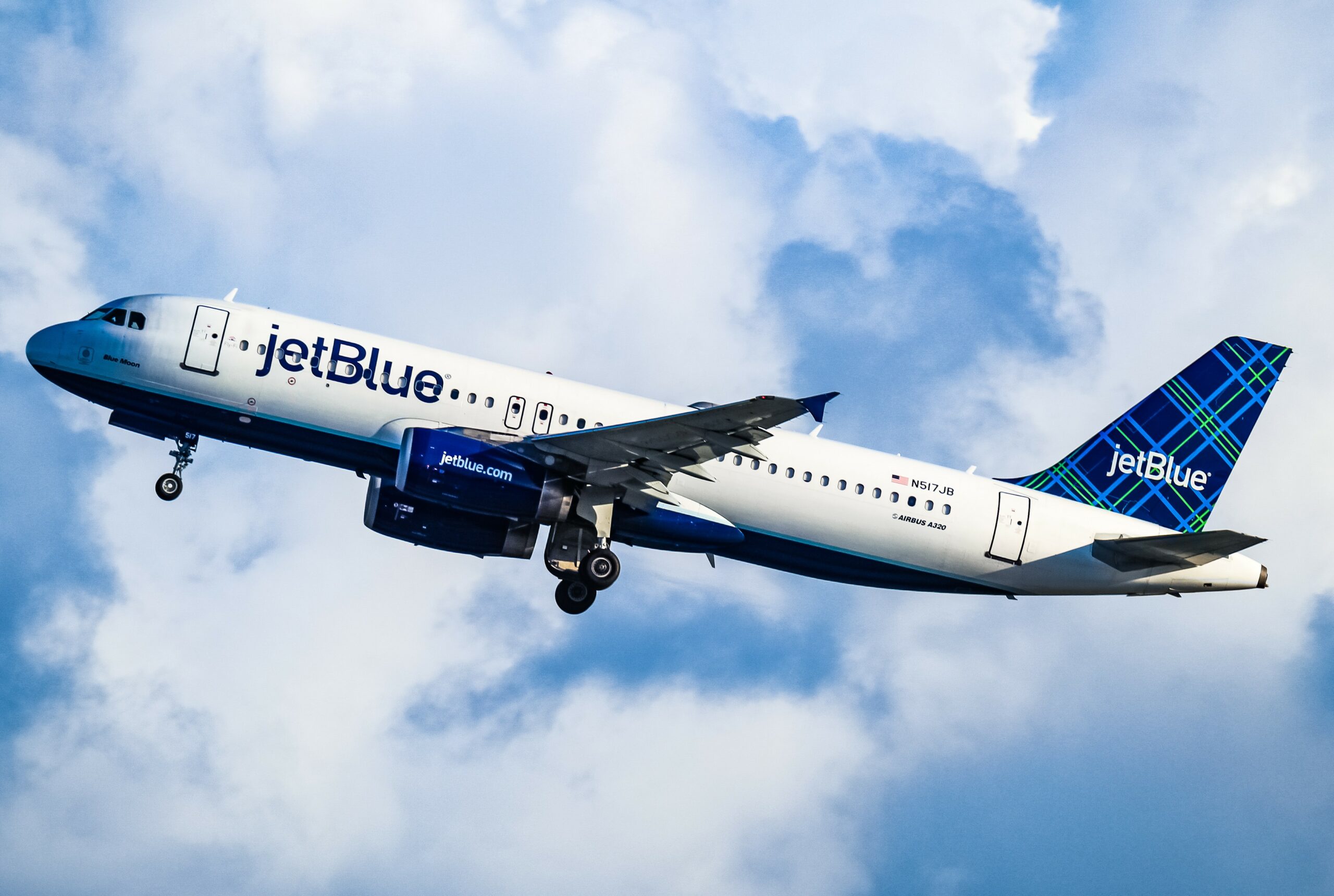
JetBlue A320 Flight scaled
JetBlue is looking back on a positive Q1, with record-high revenues that helped it to reduce losses year on year. With strong revenue growth to continue in Q2 and the rest of the year, the US carrier says it is on track to enhance long-term profitability and restore earnings power to historical levels, it said on April 25. JetBlue on track for long-term profitability.
JetBlue flew at nine percent higher capacity in Q1 year on year, which helped it to boost revenues to $2.328 billion from $1.736 billion. Passenger revenues were $2.182 billion versus $1.603 billion, with other revenues at $146 million versus $133 million. This was four percent better than guided in its initial outlook.
Total operating expenses were up by 22.2 percent to $2.570 billion compared to $2.103 billion last year. Fuel costs were up 34.1 percent to $765 million, but salaries and wages were the next biggest expenses at $741 million. Operating expenses per available seat miles (CASM) excluding fuel was 1.2 percent up, better than the 1.8 percent that was guided. Including fuel, CASM was 12.1 percent up.
The result was a $-252 million operating loss versus $-367 million in Q1 last year, a pre-tax loss of $-266 million versus $-398 million, and a net loss of $-192 million versus $-255 million or $-0.58 cents per share. The carrier ended the quarter with $2.3 billion in liquidity (including a $600 million undrawn revolving facility) and reduced the debt-to-capital ratio to 53 percent, which is well below the four biggest US airlines.
Strong demand curbed by ATC issues
JetBlue is seeing strong demand for leisure and visiting friends and relatives, particularly during peak periods. The North East Alliance (NEA) with American Airlines in New York is performing well and poised for further earnings contributions during the year. But JetBlue, like other carriers, is forced to cut some capacity this summer because of ATC staffing capacity restrictions, notably in the US North East.
This makes the airline overly exposed to the capacity problem and will make this a challenging summer into Q3, said Chief Operating Officer Joanna Geraghty. “This is a continuing issue that will only be getting worse in the summer. This will have a significant financial impact on JetBlue in Q2 and potentially in Q3. We are not redeploying the capacity that we sold. Because we are so concentrated in the North East and because there are staffing challenges across the entire net, our decision is to reinvest those crews into higher reserves and invest these aircraft in additional aircraft time to help mitigate the delays that we are expected to see this summer.”
Capacity in Q2 should increase by 4.5 to 7.5 percent in Q2 and between 5.5 and 8.5 percent for the full year. Revenues in Q2 should be up by 4.5 to 8.5 percent and in the high single-digits to low double-digits for FY23 compared to FY22. The closure of Fort Lauderdale-Hollywood this month will impact revenues by 0.5 percent, but the bank scare drop of last month is now no longer an issue.
CFO Ursula Hurley said that JetBlue will maintain strict cost discipline, having already achieved $35 million in run-rate cost savings since the launch of the program. This was the fifth consecutive quarter in which JetBlue met its cost targets. A cost reduction of $70 million this year is well on track or between $150 and $200 million in cumulative savings through 2024. CASM ex-fuel is guided to be up 1.5 to 3.5 percent in Q2 and between 1.5 and 4.5 percent for the full year. Yet, Hurley isn’t ruling out a drop in revenue unit margins later this year.
Amsterdam from August
Gearing up for the summer, JetBlue revealed details today of its new Amsterdam services for which it secured slots in March. It will launch New York JFK to Amsterdam on August 29 and Boston to Amsterdam on September 20. While JetBlue initially said that it secured slots only for the summer season, its 2024 schedule reveals some flights in early March too. This indicates that the carrier would be able to operate a stable network from late summer through the winter season.
However, JetBlue warns of delivery delays from Airbus, which forces it to evaluate planning assumptions. Airbus is set to deliver eleven A220s, four A321neo’s, and four A321LRs this year. The planning includes the return of four A320ceo’s and six Embraer E190s this year, plus eight A320neo’s and sixteen E190s next year. Retaining aircraft longer won’t help its new Paris and Amsterdam services. Retiring twelve E190s has saved the airline $30 million to date, with cumulative savings of $75 million through 2024 as more Embraers are retired.
Views: 11



